Denmark’s BIG has shaped itself the ultimate studio on the quayside in Copenhagen
Bjarke Ingels’ studio BIG has practised what it preaches with a visually sophisticated, low-energy office with playful architectural touches
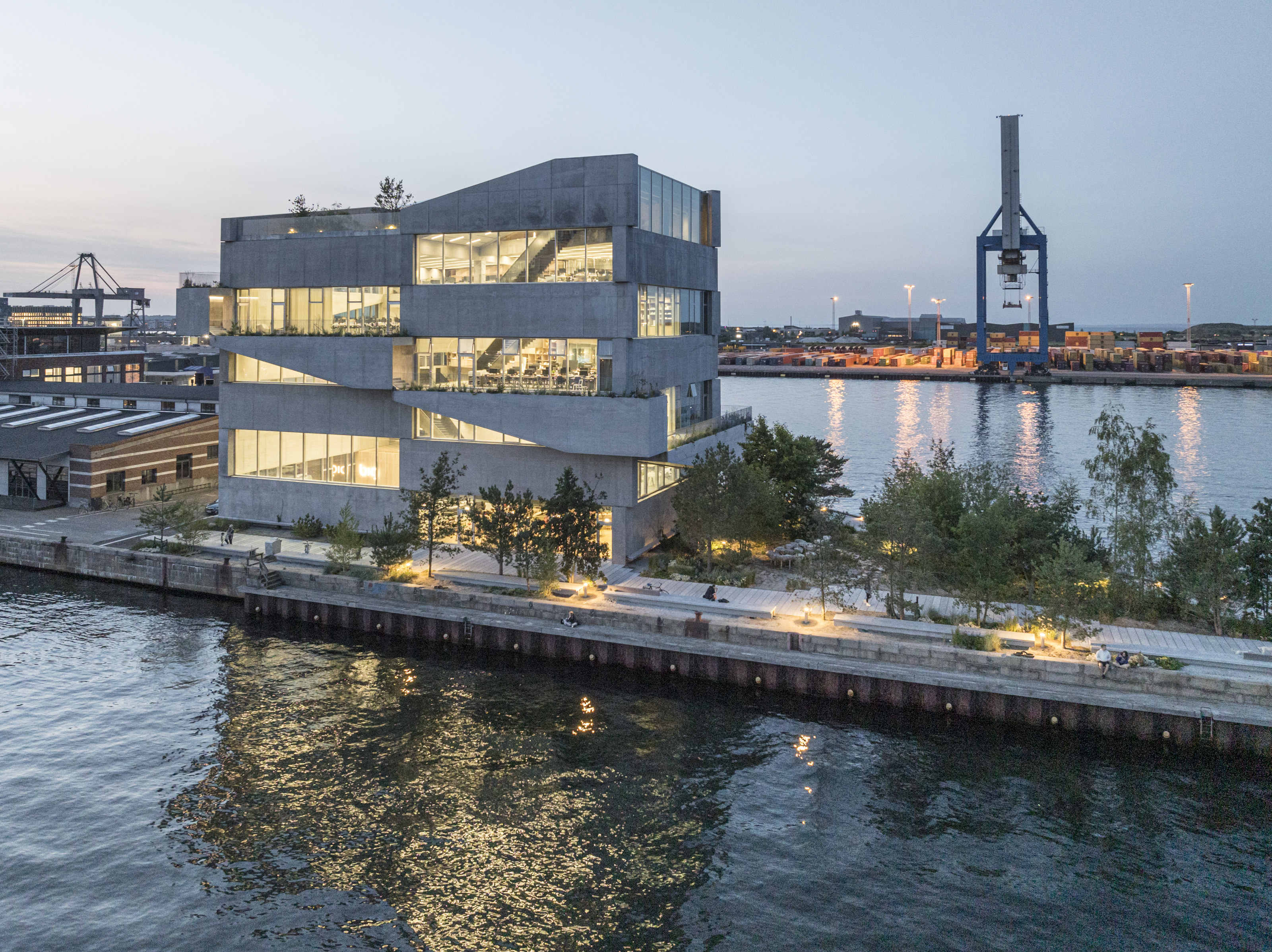
The Bjarke Ingels Group (BIG) doesn’t like to do things by halves. Two years after opening an impressive new studio in New York, the hugely busy award-winning firm has now given itself a vast HQ building in Copenhagen, set in the heart of the port to the north of the city centre – and addressing sustainable architecture principles too.
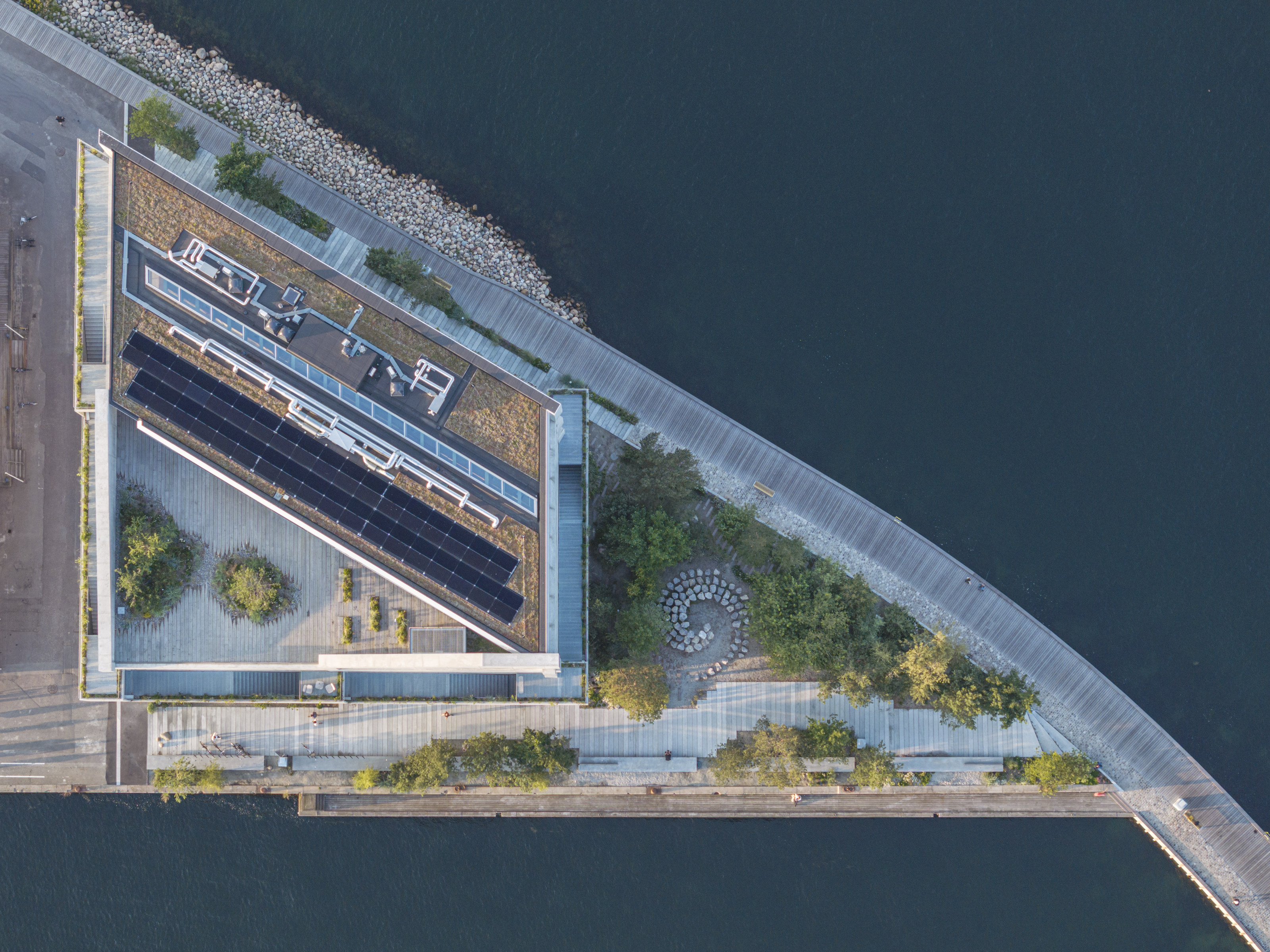
The new BIG HQ in Copenhagen replaces a car park
Tour the BIG studio in Copenhagen
A neo-brutalist lump that saves its architectural drama for the interior, the new BIG HQ replaces a car park and stands 27m tall above Copenhagen’s Nordhavn. Three hundred people (or ‘BIGsters’, in the company’s parlance) work here, just under half of BIG’s global workforce. As both designer and client, the studio offered the architects an opportunity to explore and experiment, as well as a chance to practice what they preached in terms of sustainable, low-energy construction and running costs.
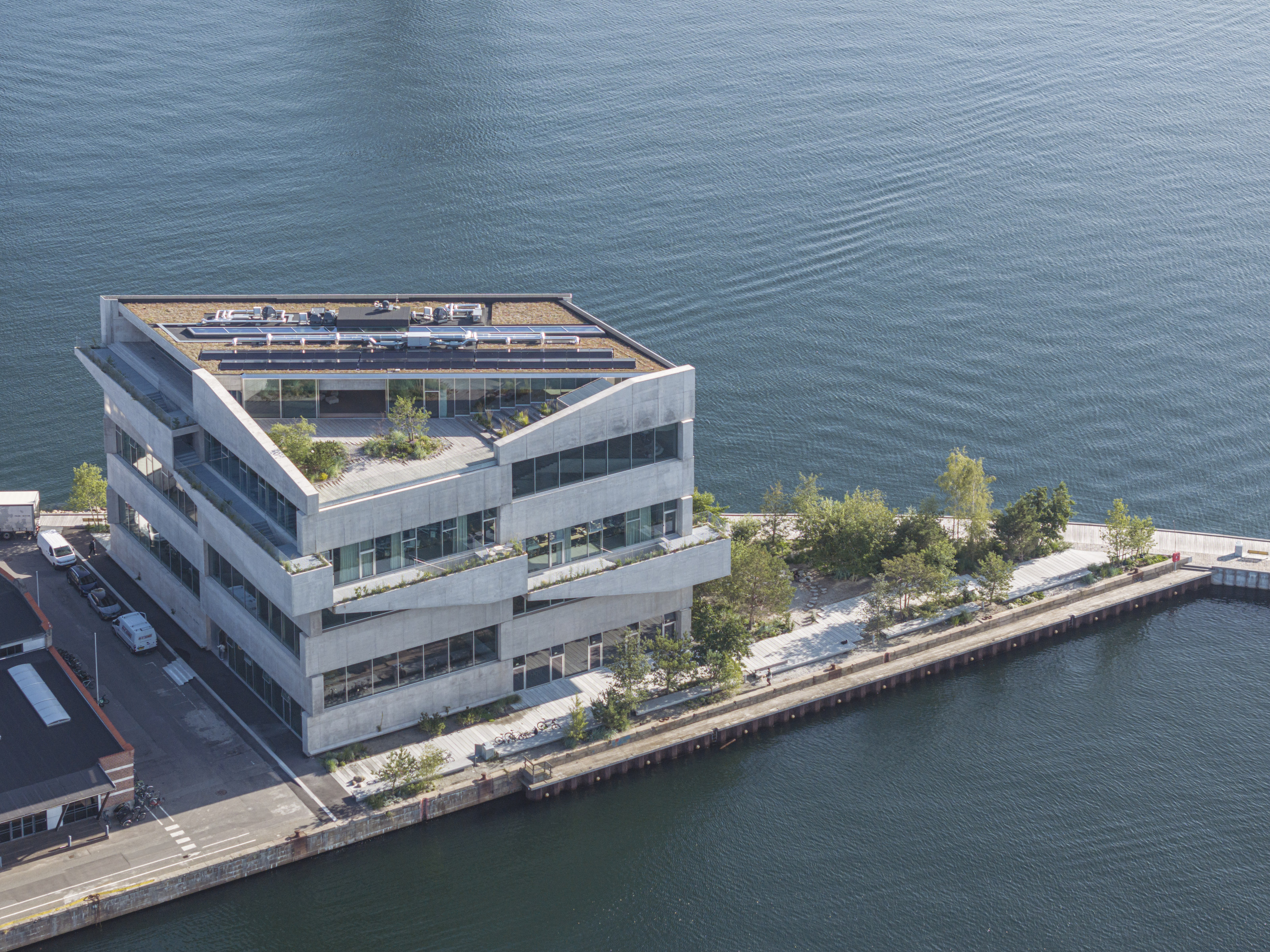
The HQ sits at the end of a pier in the city's docks
Completed in spring 2024, the building has now had several months to bed in. Rising up at the tail end of the Sundmolen pier, with new landscaping starting to soften the hard edges of a curved concrete walkway, the seven-storey building is a reimagination of the classic studio archetype. The east façade has an array of tall windows, with a series of terraces, linked by a 140m-long external staircase, wrap themselves around the façade.
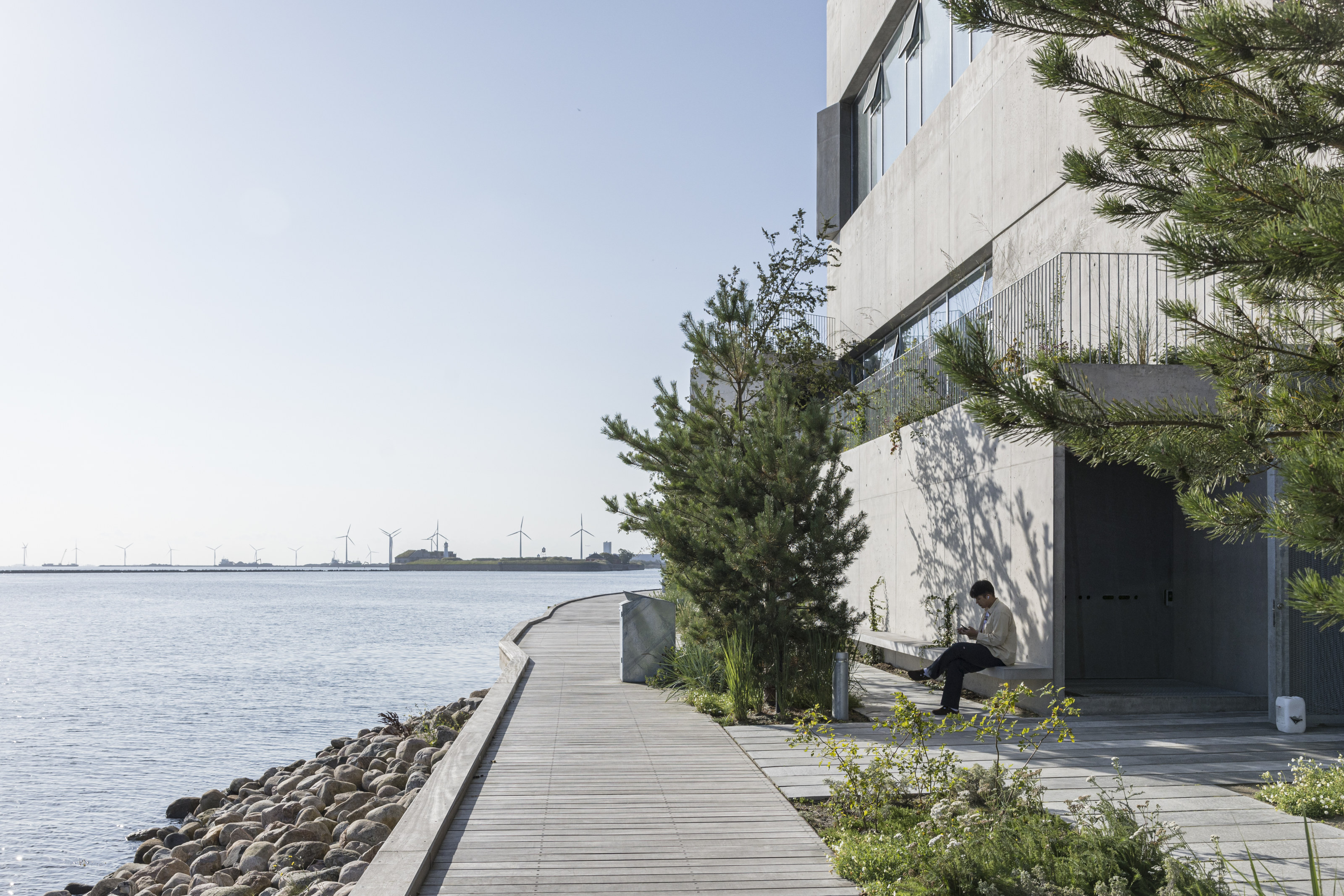
New planting and pathways surround the studio
To build here, the architectural firm engaged all its various departments, Landscape, Engineering, Architecture, Planning, and Product Design. This approach is something the studio has dubbed LEAPP (from the deparments' initials), combining as it does its different expertise. To ensure that a cross-disciplinary approach is fully integrated, elements like structural engineering, for example, are closely integrated with the spatial design.
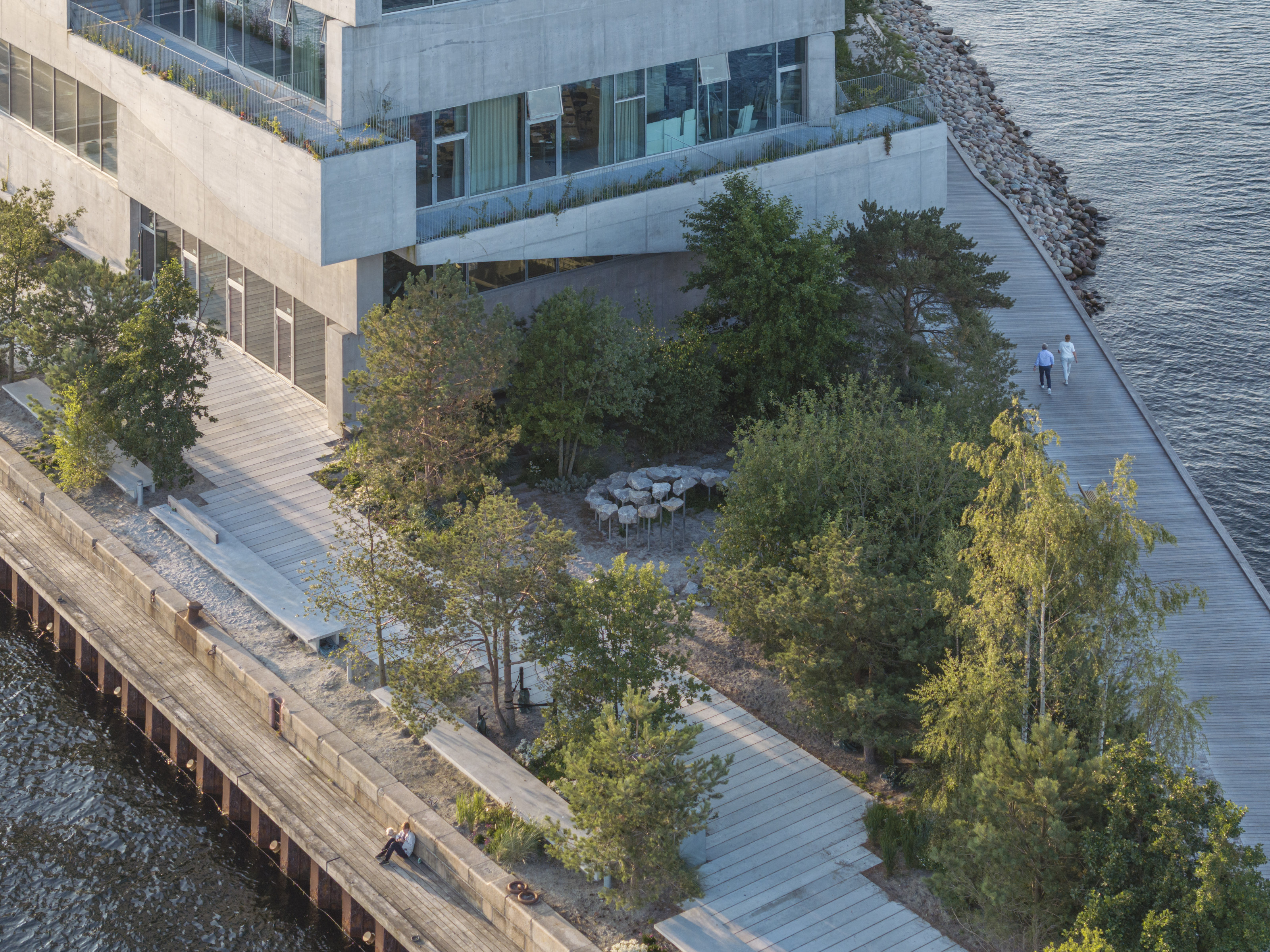
Benjamin Langholz's sculpture '40 stones' can be seen in the new gardens
Ultra-high environmental performance started with the structure itself, which is formed from the new Uni-Green concrete mix from Canadian supplier Unicon, a product with a lower CO2 consumption than traditional concrete thanks to its use of calcined clay and lime filler. Solar and geothermal energy systems are paired with natural ventilation; overall, 60 per cent of the building’s energy costs come from renewables.
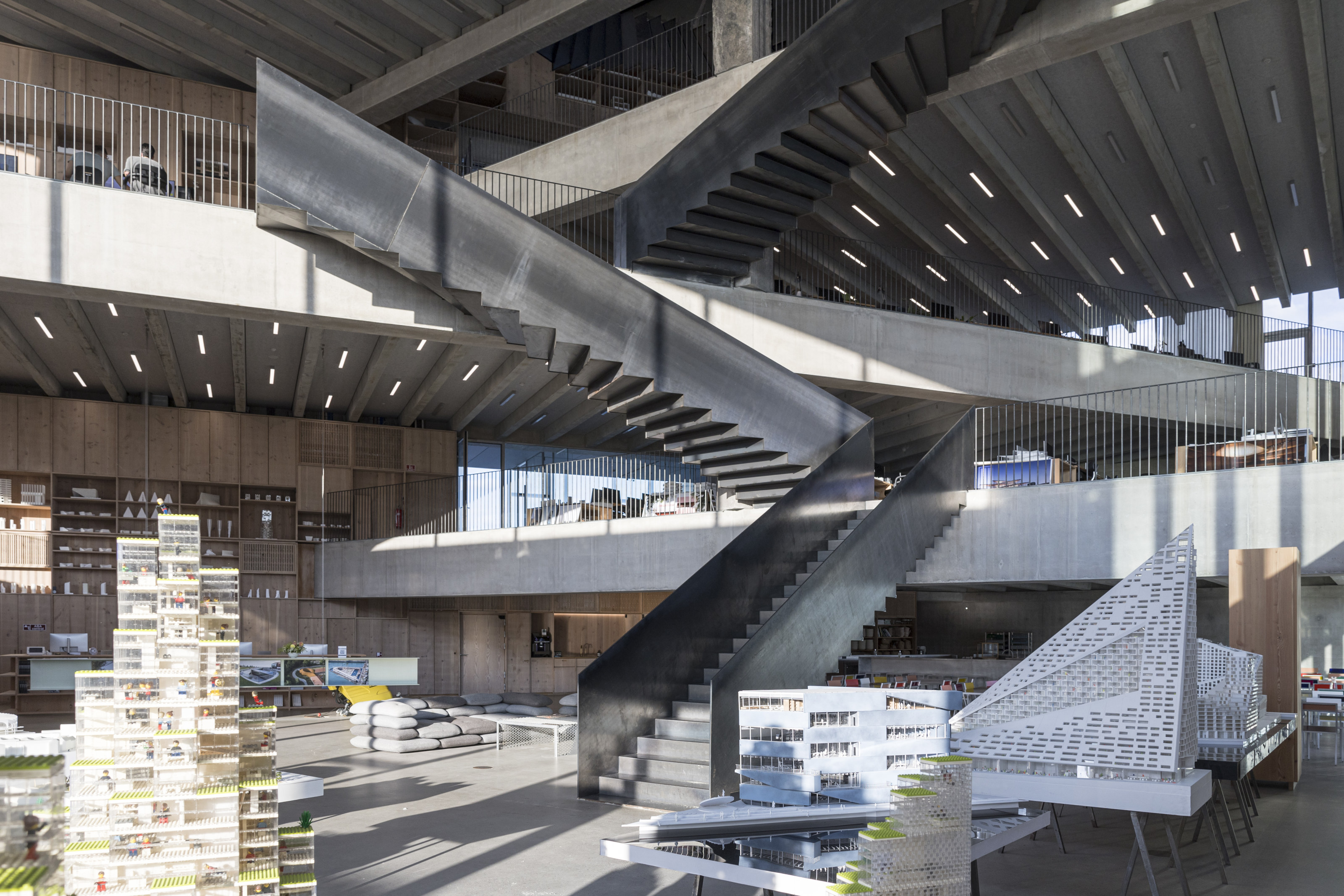
A staircase zig-zags its way up the towering internal space
All this was achieved without sacrificing the structural and spatial drama that has come to characterise BIG’s architectural approach. The central studio space soars all the way from the ground floor to the upper level, with interlocking staircases and walkways bisecting the space. It’s a deliberate reference to the dark but emotive architectural vision seen in the architectural etchings of Piranesi, as well as a way of giving each level its own sense of spatial independence and varied external views. Covering 4,880 sq m, the building offers space to grow without the danger of ever feeling like an empty hangar.
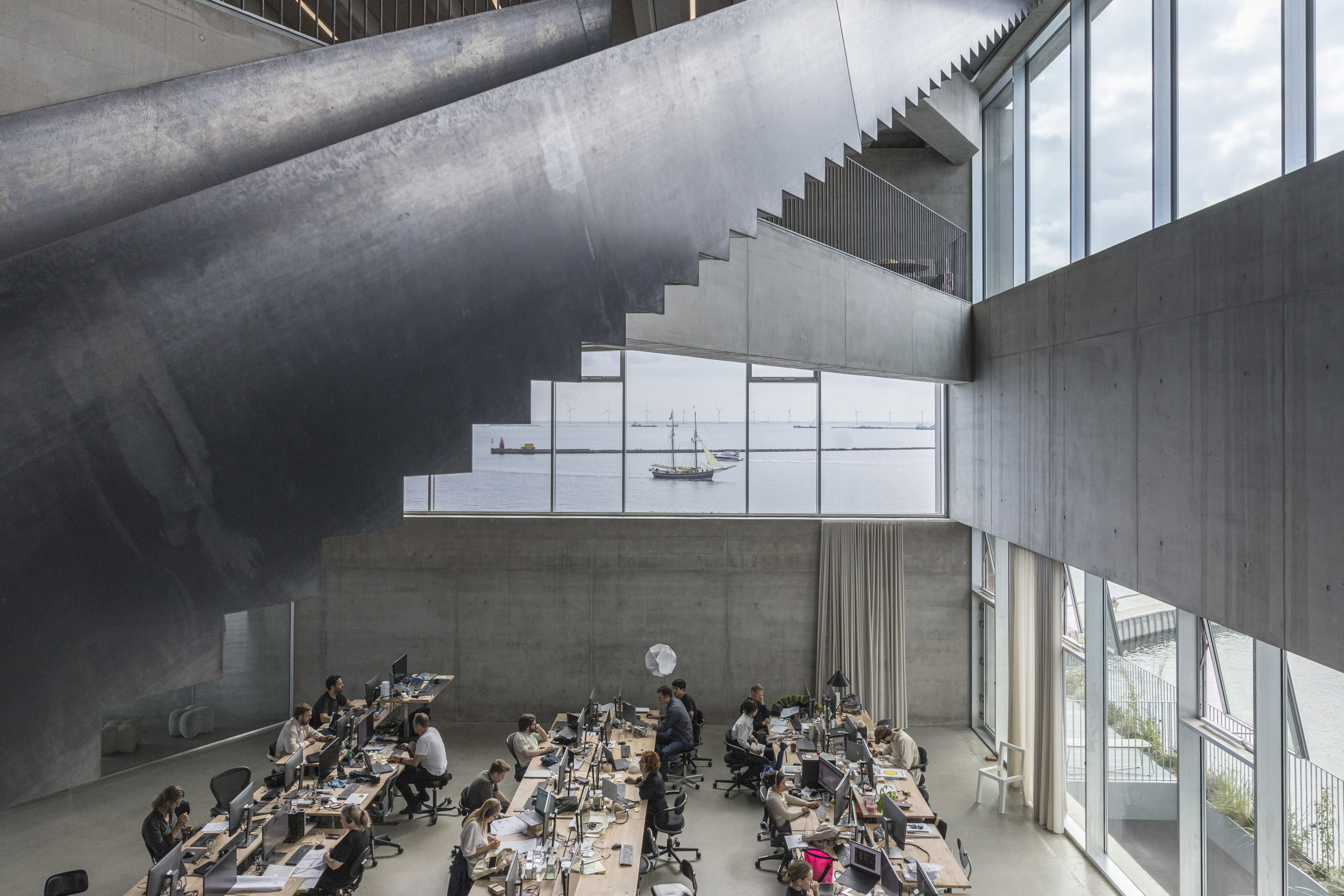
Each level has unique views across and out
There is a little bit of showboating, as one would expect (and perhaps demand) of a structure built by and for architects, such as the single load-bearing column in the main space. This uses no fewer than six different rock types in order to ‘form a totem pole to [honour] gravity at the heart of the open space that rotates on each floor to align with the beam that it’s carrying’. As well as new external planting on the terraces and pier, the project incorporates a project by sculptor Benjamin Langholz, a spiral of 40 stones.
Receive our daily digest of inspiration, escapism and design stories from around the world direct to your inbox.
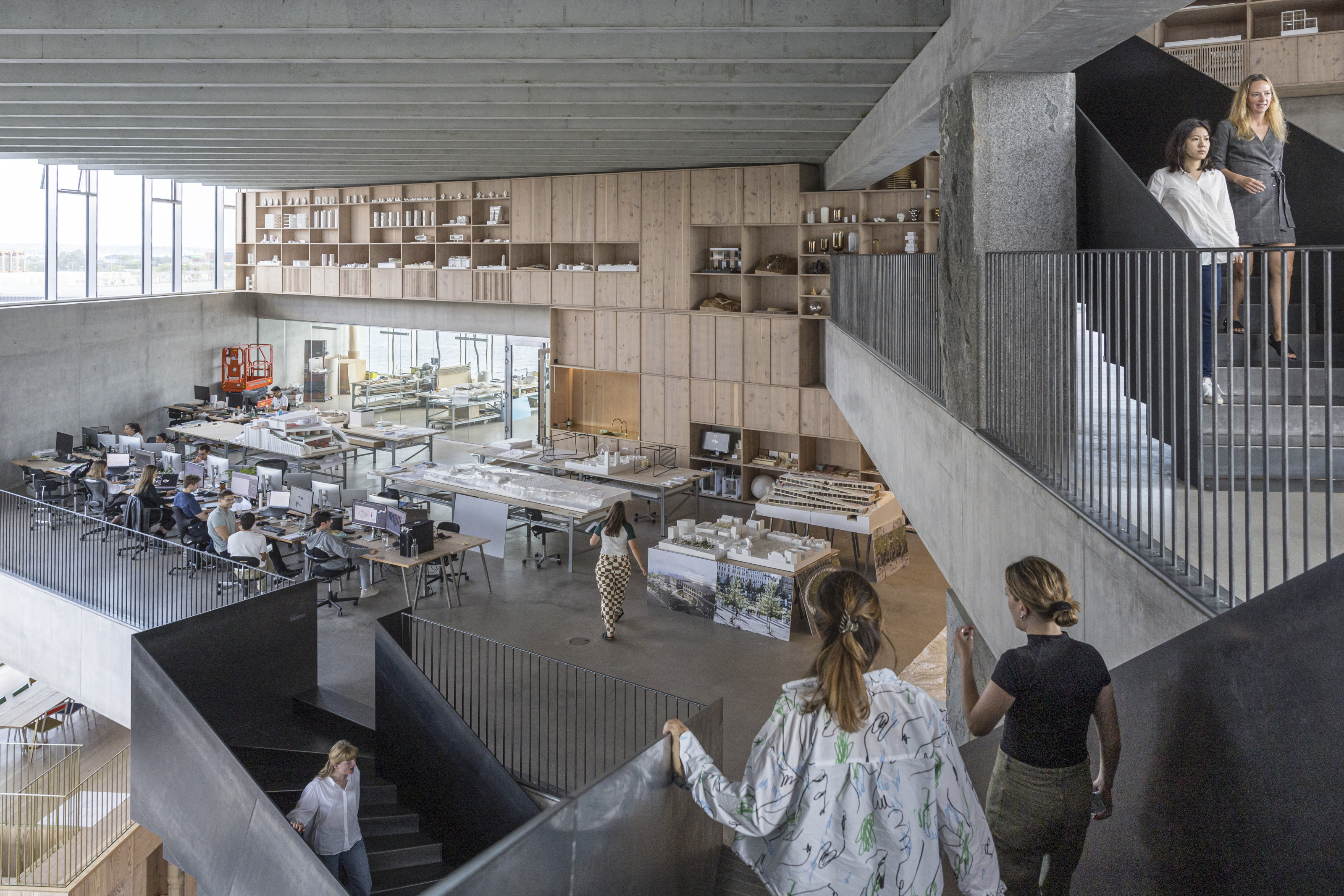
Inside the new BIG HQ in Copenhagen
‘Every floor has access to an outdoor terrace that is connected to the outdoors terrace above and below,’ says Ingels, ‘… you can walk all the way from the roof to the ground floor. This creates incredibly framed views as you move through the building – sometimes you see a fragment of the Nordhavn community, sometimes you see a frame of the water, sometimes a framed view of the windmills at Middelgrunden.’
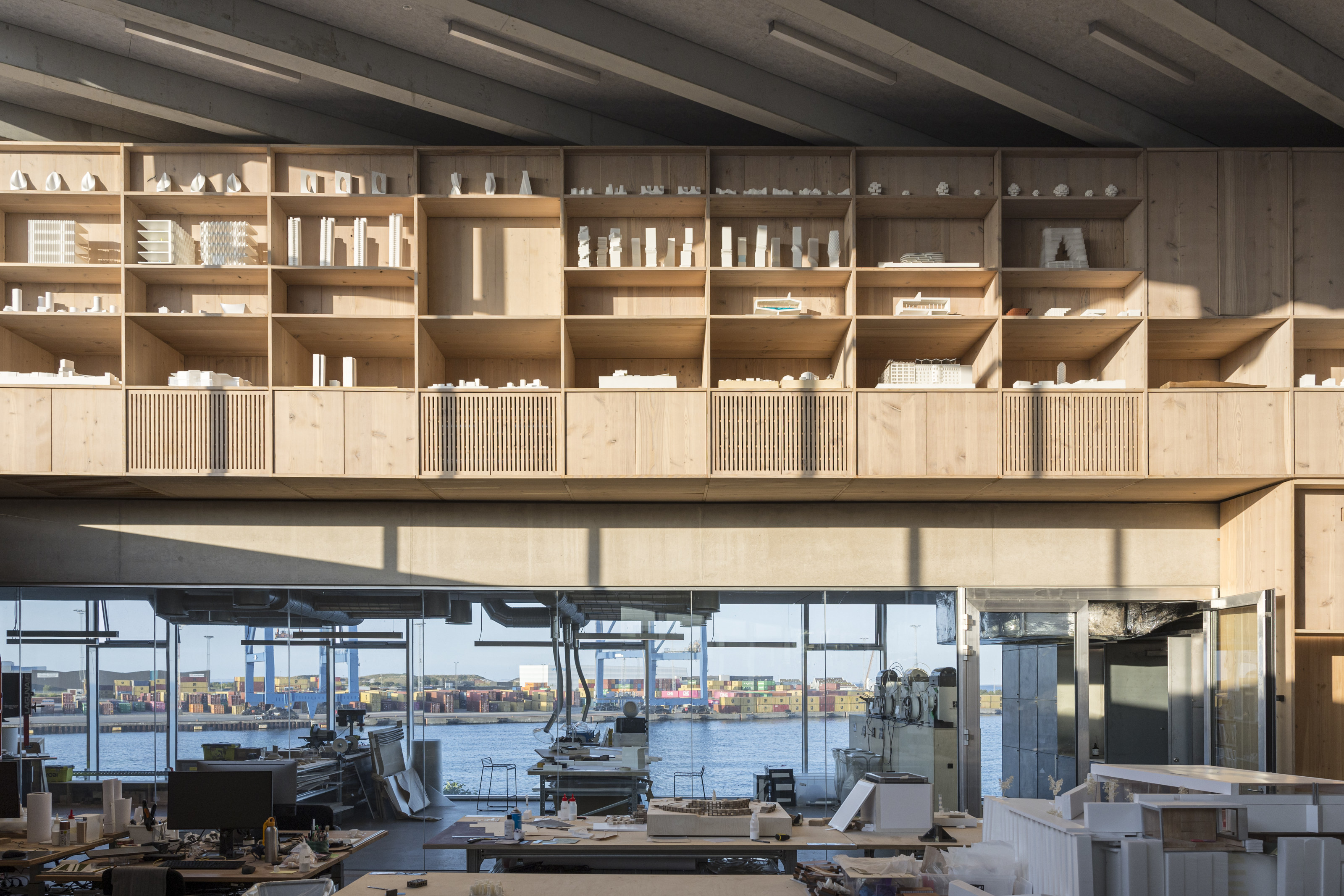
Inside the new BIG HQ, Copenhagen
Ingels and Finn Nørkjær oversaw the project, which was managed by Ole Elkjær-Larsen. The design lead was Frederik Lyng and the project architect was Jesper Boye Andersen.
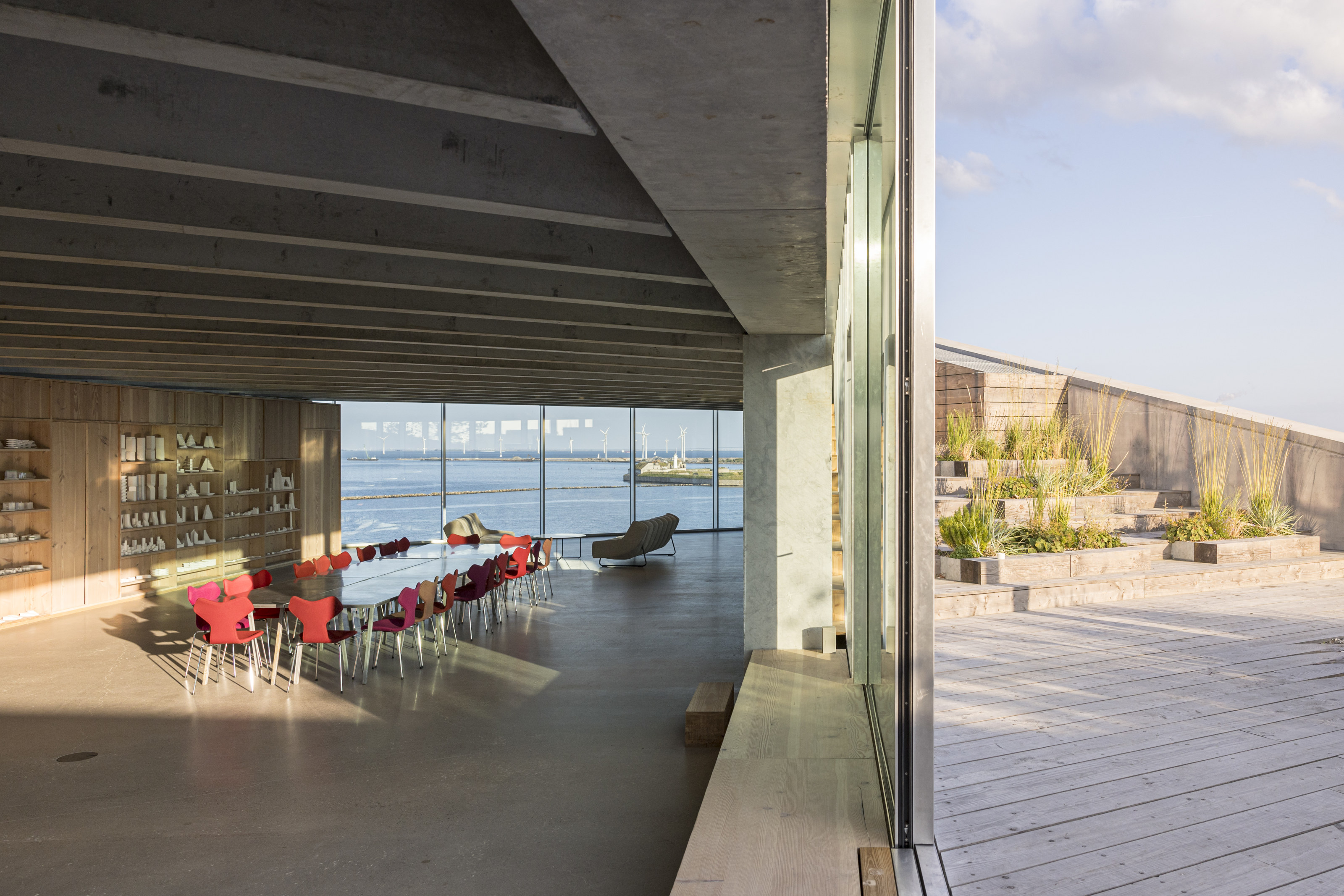
The building is surrounded by new terraces and outdoor space
Jonathan Bell has written for Wallpaper* magazine since 1999, covering everything from architecture and transport design to books, tech and graphic design. He is now the magazine’s Transport and Technology Editor. Jonathan has written and edited 15 books, including Concept Car Design, 21st Century House, and The New Modern House. He is also the host of Wallpaper’s first podcast.
-
 Robert Therrien's largest-ever museum show in Los Angeles is enduringly appealing
Robert Therrien's largest-ever museum show in Los Angeles is enduringly appealing'This is a Story' at The Broad unites 120 of Robert Therrien's sculptures, paintings and works on paper
-
 The Wallpaper* style team recall their personal style moments of 2025
The Wallpaper* style team recall their personal style moments of 2025In a landmark year for fashion, the Wallpaper* style editors found joy in the new – from Matthieu Blazy’s Chanel debut to a clean slate at Jil Sander
-
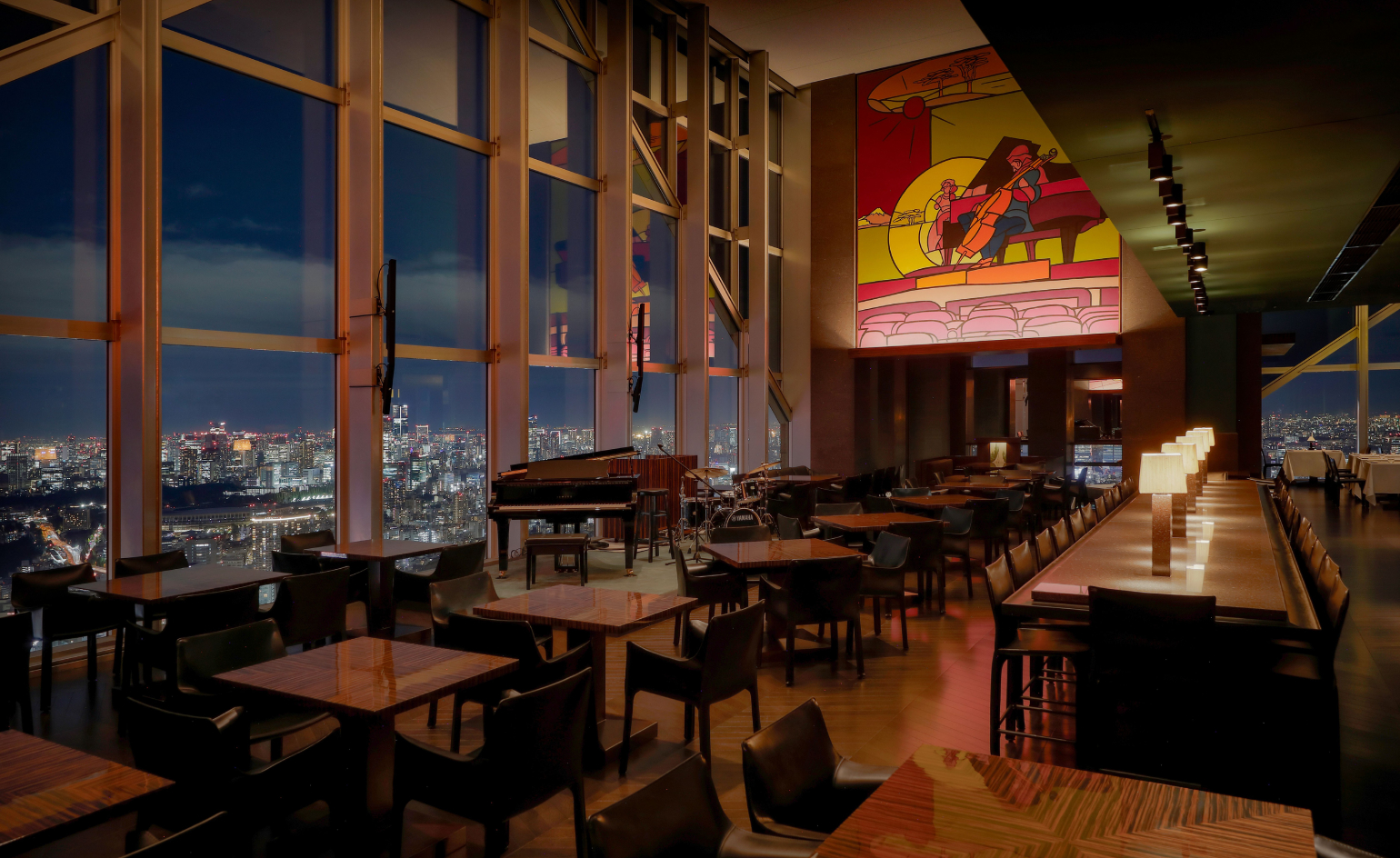 Tokyo’s most cinematic stay reopens as an exercise in architectural self-control
Tokyo’s most cinematic stay reopens as an exercise in architectural self-controlPark Hyatt Tokyo and Studio Jouin Manku demonstrate how design can evolve without erasing memory, balancing modernist heritage with contemporary comfort
-
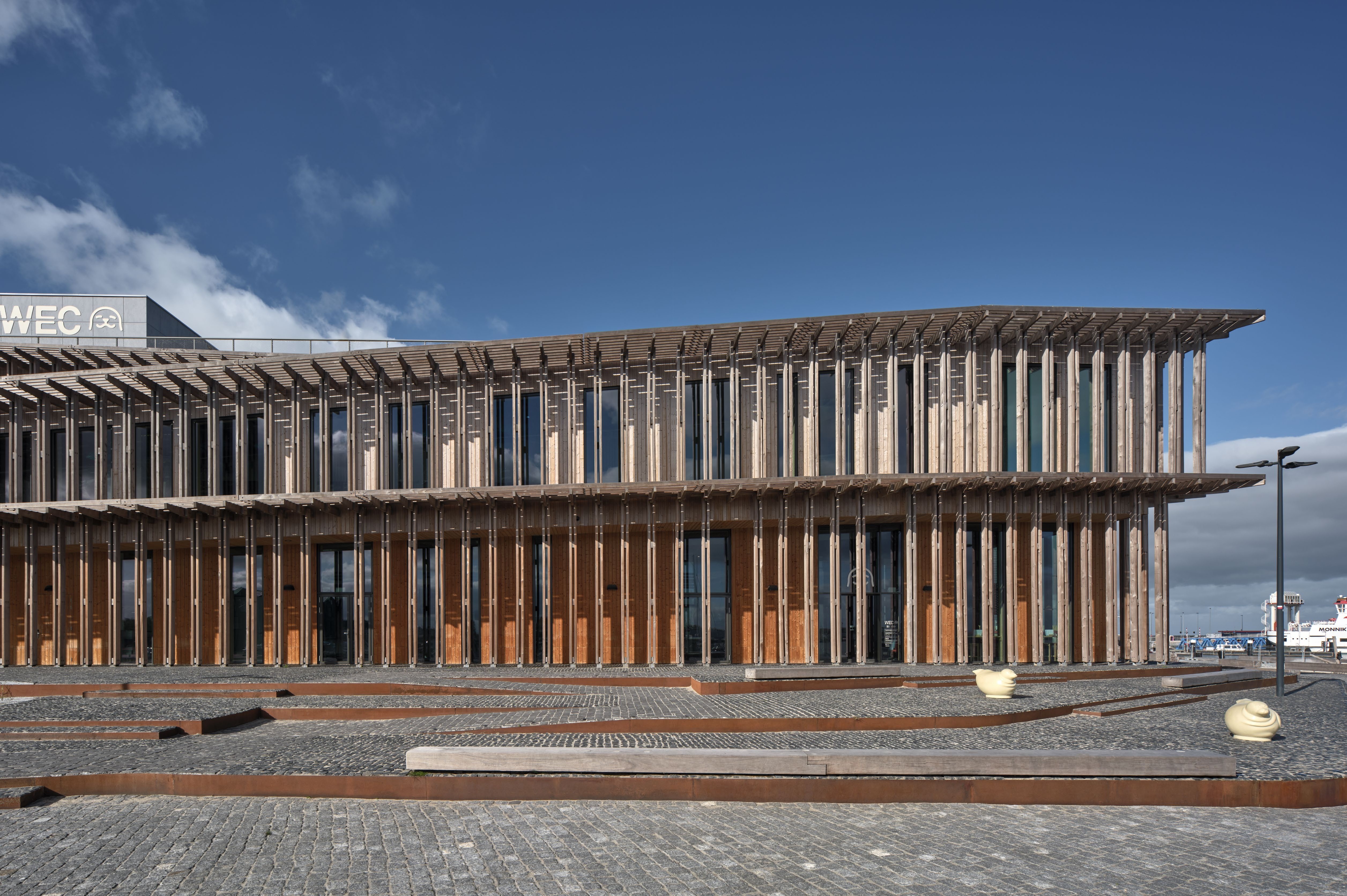 A Dutch visitor centre echoes the ‘rising and turning’ of the Wadden Sea
A Dutch visitor centre echoes the ‘rising and turning’ of the Wadden SeaThe second instalment in Dorte Mandrup’s Wadden Sea trilogy, this visitor centre and scientific hub draws inspiration from the endless cycle of the tide
-
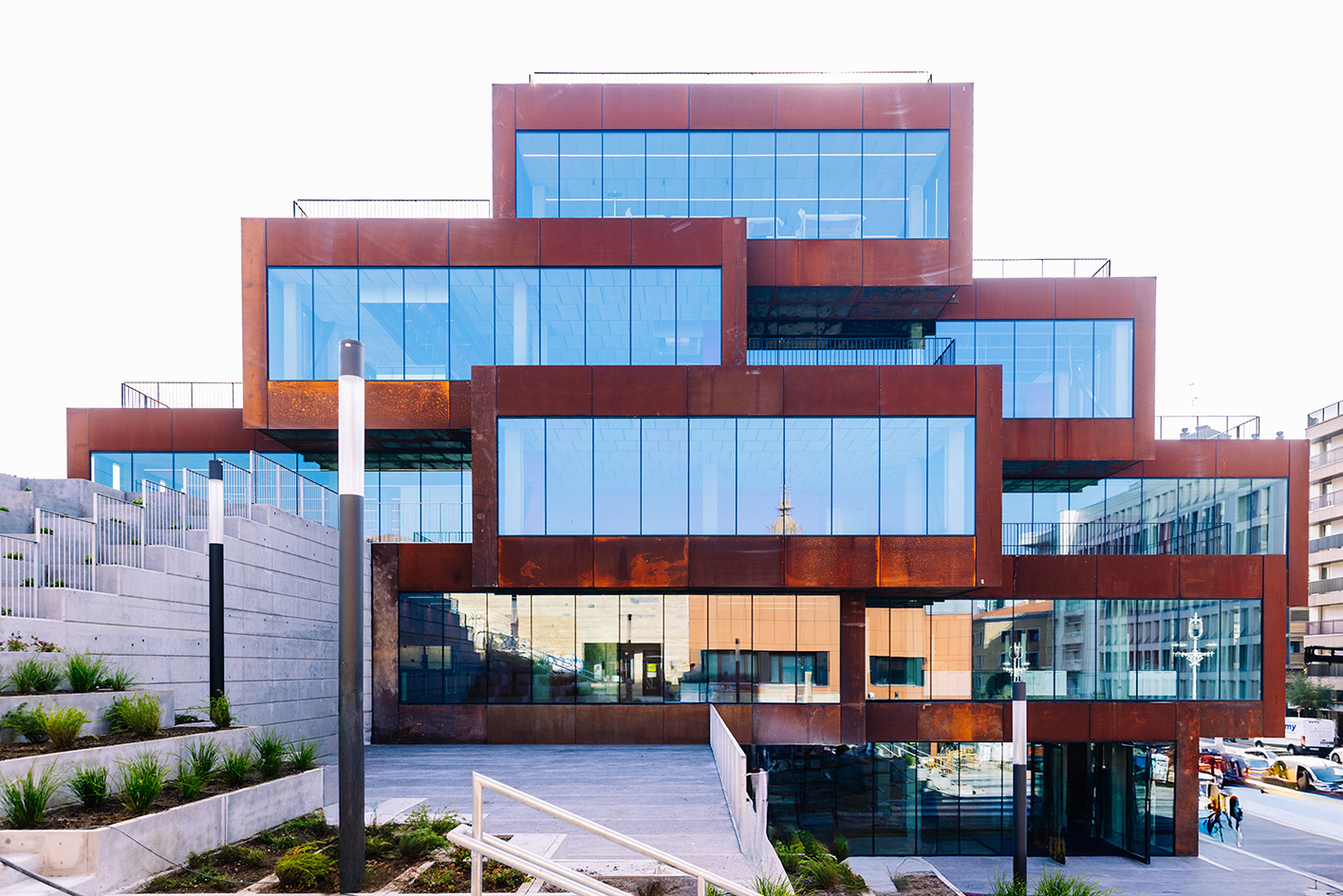 In the heart of Basque Country, Bjarke Ingels unveils a striking modular building devoted to culinary research
In the heart of Basque Country, Bjarke Ingels unveils a striking modular building devoted to culinary researchSee what the architect cooked up for the Basque Culinary Center in San Sebastián, Spain
-
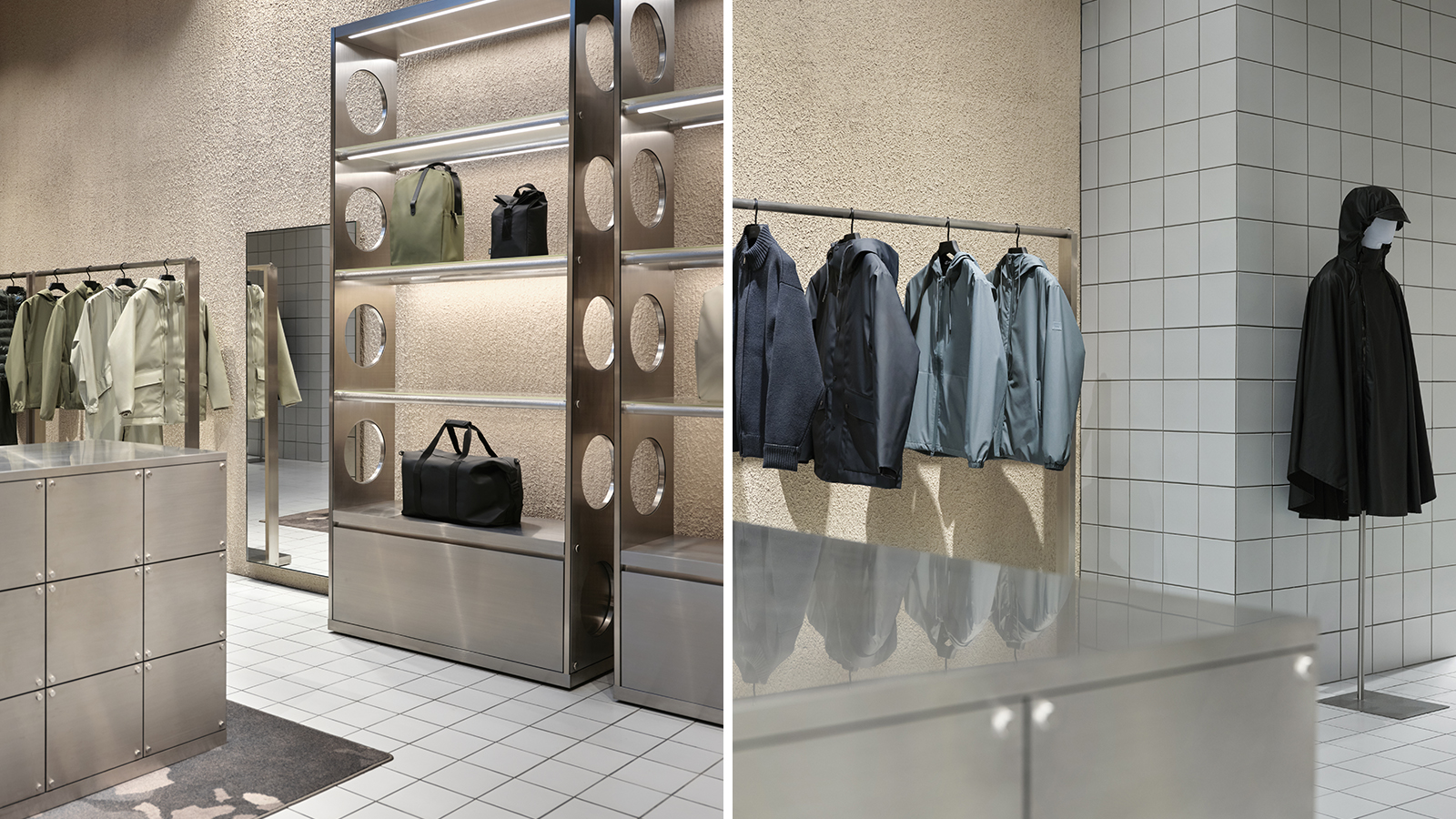 Rains Amsterdam is slick and cocooning – a ‘store of the future’
Rains Amsterdam is slick and cocooning – a ‘store of the future’Danish lifestyle brand Rains opens its first Amsterdam flagship, marking its refined approach with a fresh flagship interior designed by Stamuli
-
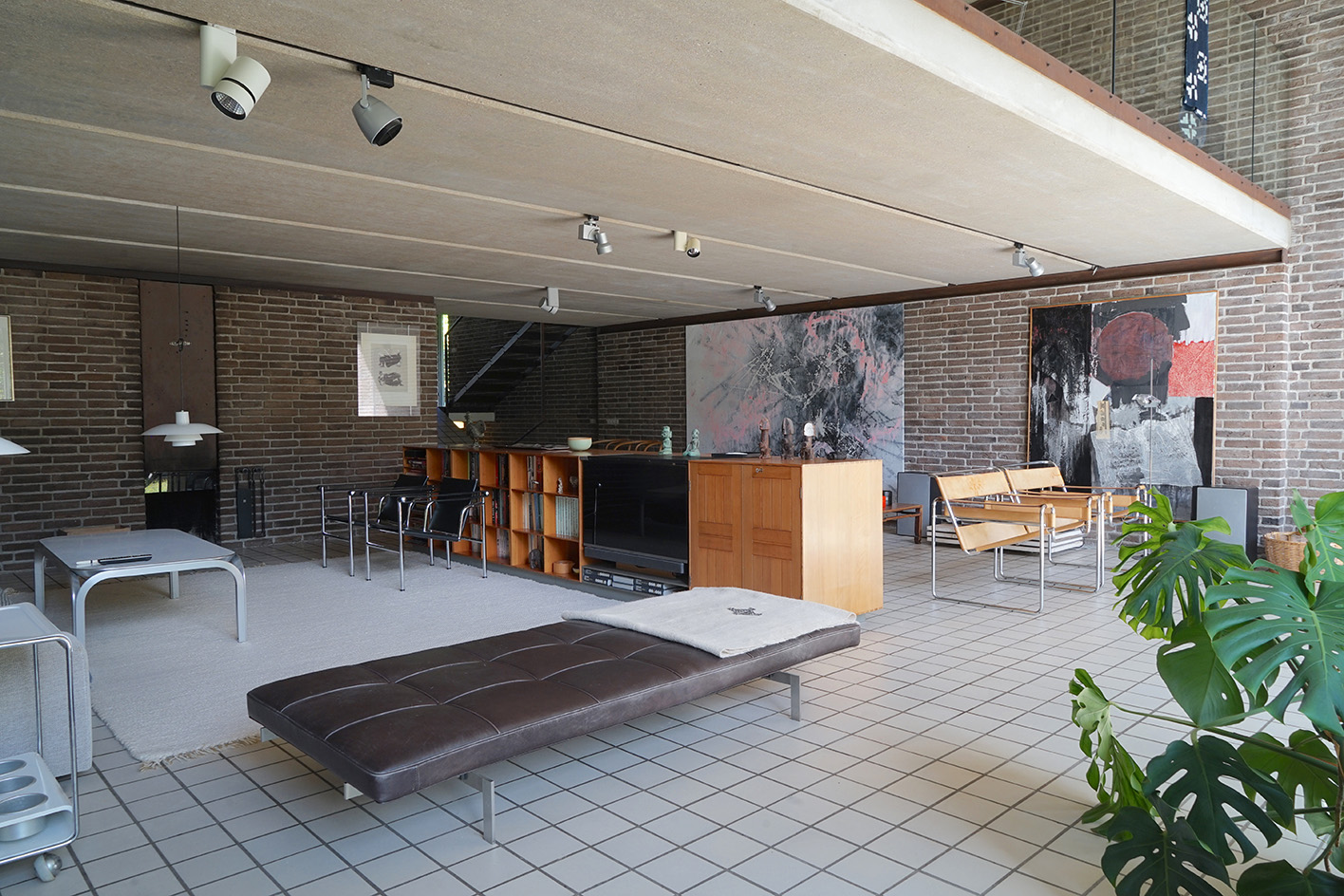 Three lesser-known Danish modernist houses track the country’s 20th-century architecture
Three lesser-known Danish modernist houses track the country’s 20th-century architectureWe visit three Danish modernist houses with writer, curator and architecture historian Adam Štěch, a delve into lower-profile examples of the country’s rich 20th-century legacy
-
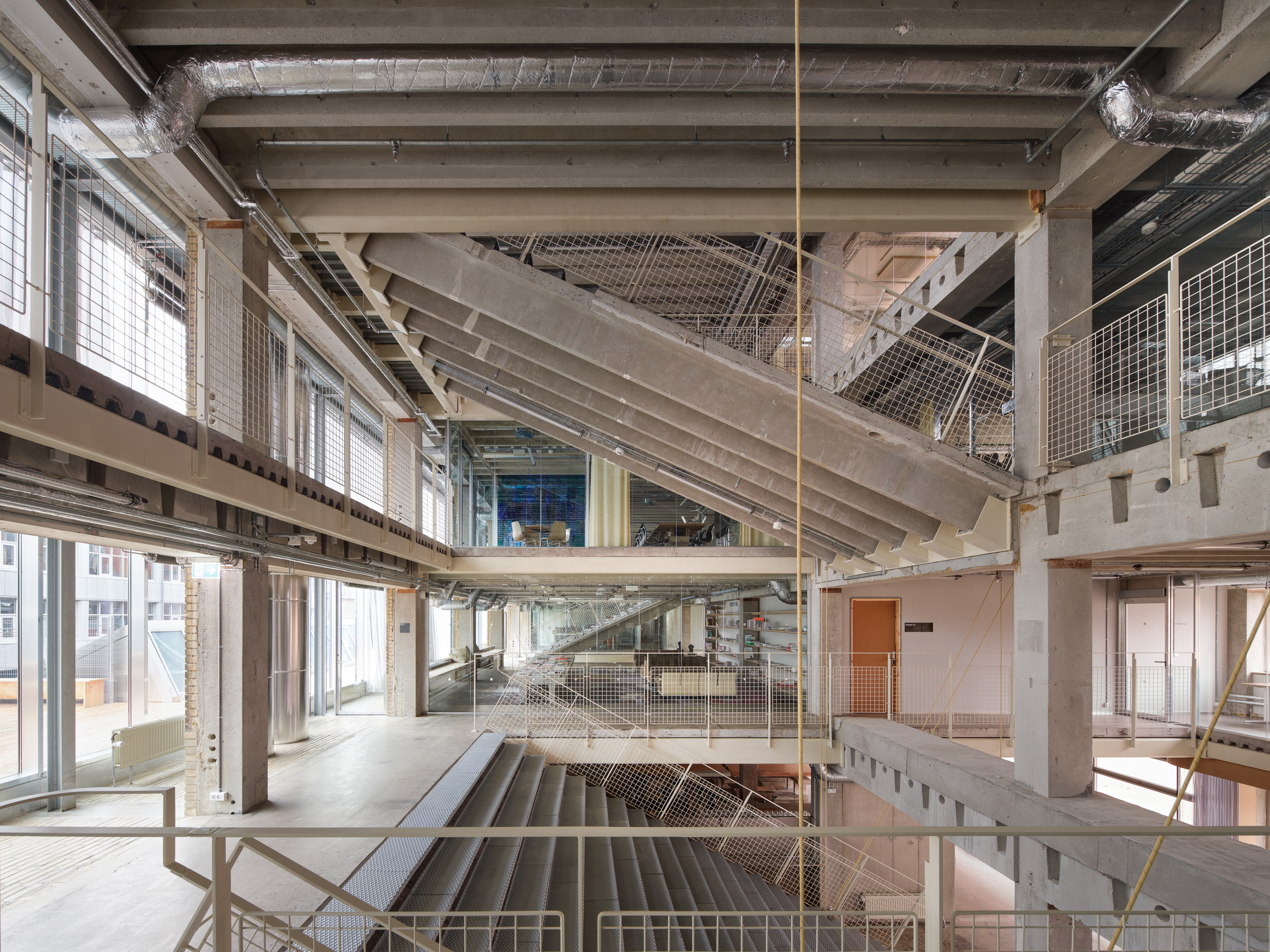 Is slowing down the answer to our ecological challenges? Copenhagen Architecture Biennial 2025 thinks so
Is slowing down the answer to our ecological challenges? Copenhagen Architecture Biennial 2025 thinks soCopenhagen’s inaugural Architecture Biennial, themed 'Slow Down', is open to visitors, discussing the world's ‘Great Acceleration’
-
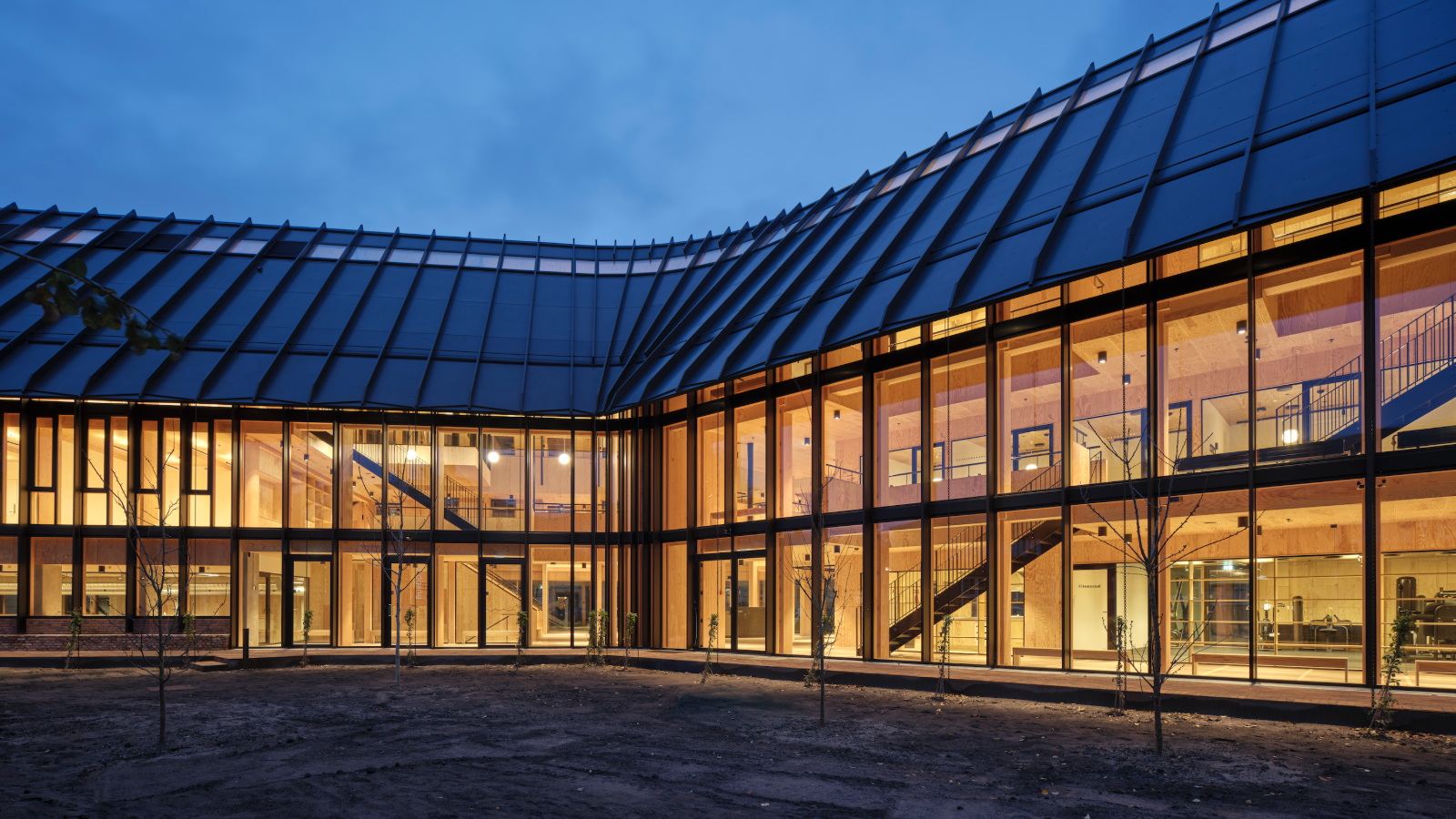 This cathedral-like health centre in Copenhagen aims to boost wellbeing, empowering its users
This cathedral-like health centre in Copenhagen aims to boost wellbeing, empowering its usersDanish studio Dorte Mandrup's new Centre for Health in Copenhagen is a new phase in the evolution of Dem Gamles By, a historic care-focused district
-
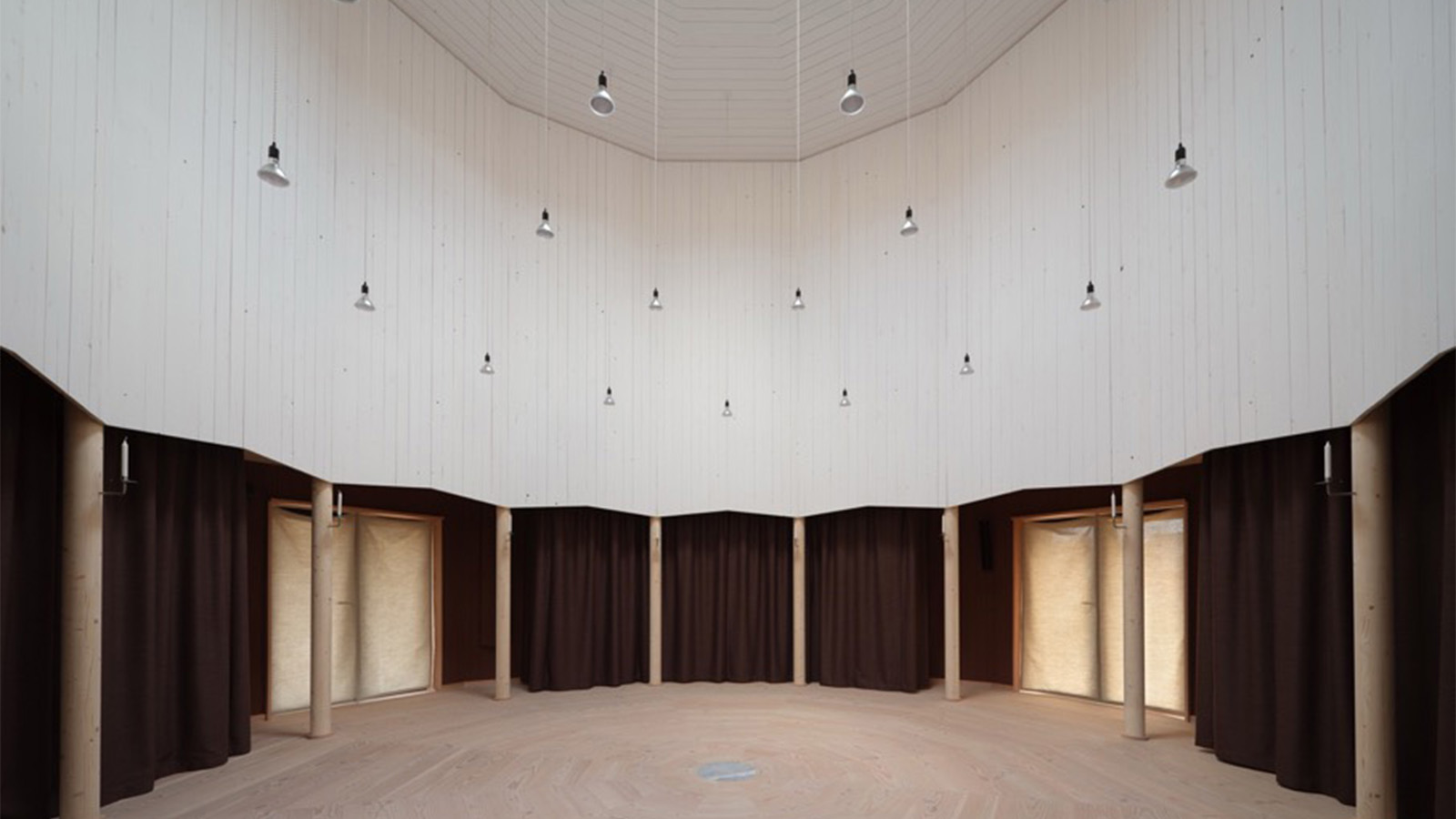 This tiny church in Denmark is a fresh take on sacred space
This tiny church in Denmark is a fresh take on sacred spaceTiny Church Tolvkanten by Julius Nielsen and Dinesen unifies tradition with modernity in its raw and simple design, demonstrating how the church can remain relevant today
-
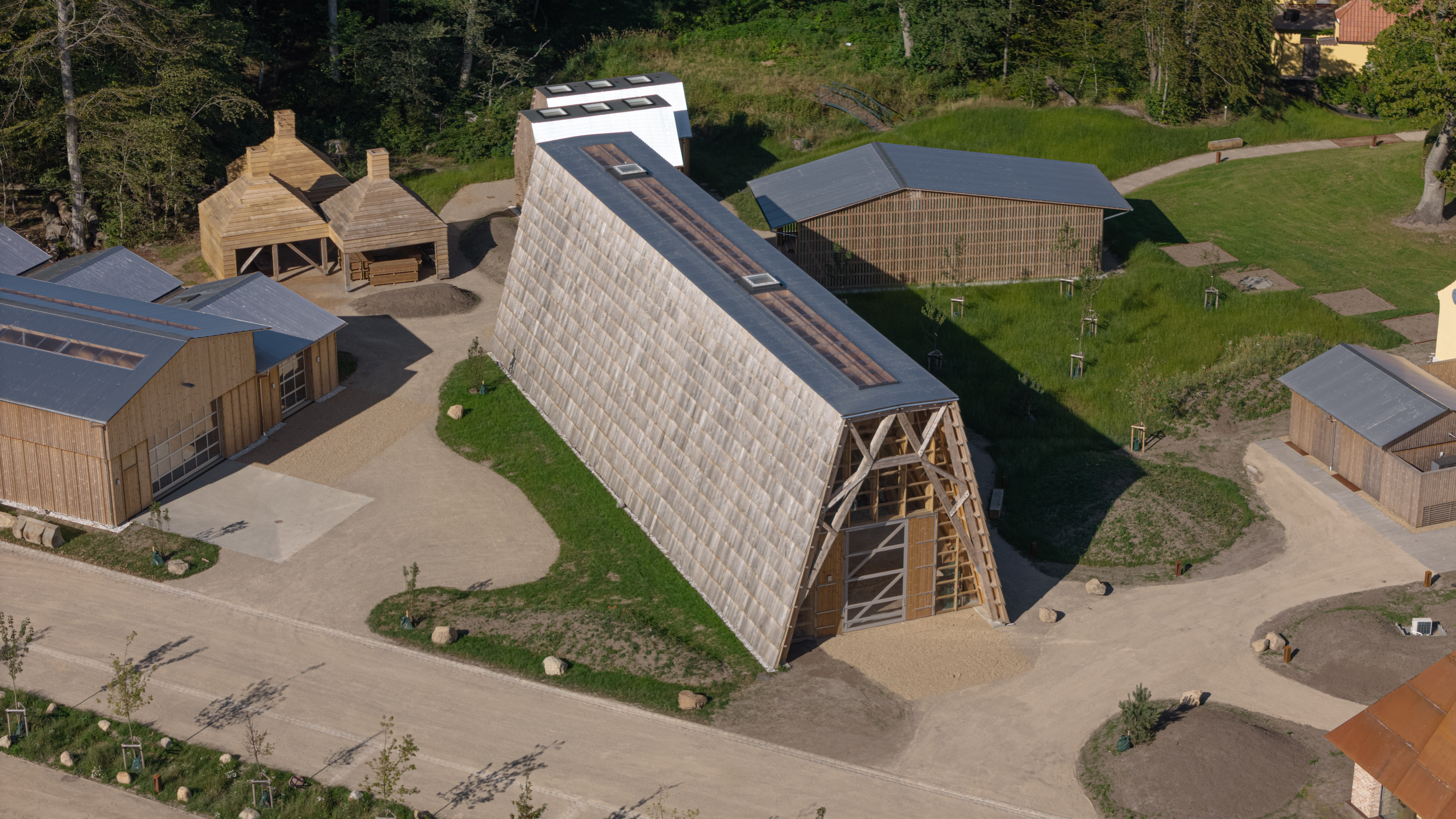 ‘Stone, timber, silence, wind’: welcome to SMK Thy, the National Gallery of Denmark expansion
‘Stone, timber, silence, wind’: welcome to SMK Thy, the National Gallery of Denmark expansionA new branch of SMK, the National Gallery of Denmark, opens in a tiny hamlet in the northern part of Jutland; welcome to architecture studio Reiulf Ramstad's masterful redesign of a neglected complex of agricultural buildings into a world-class – and beautifully local – art hub